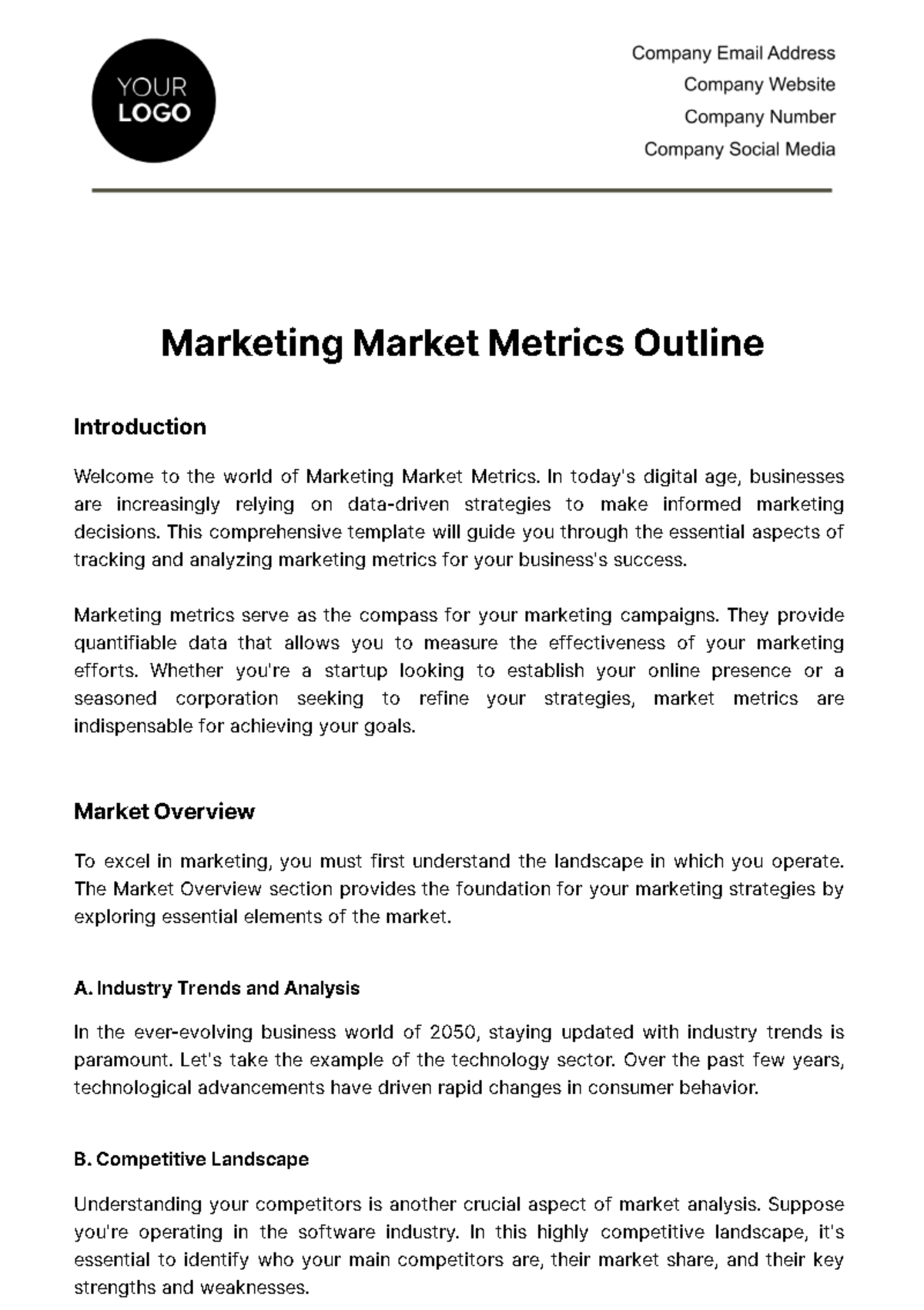Free Marketing Market Metrics Outline
Discover the Marketing Market Metrics Outline Template on Template.net! This editable and customizable tool streamlines metric tracking for your marketing efforts. Tailor it to your needs effortlessly using our Ai Editor Tool. Stay ahead of the curve by optimizing your strategies with this essential resource. Elevate your marketing game today!
